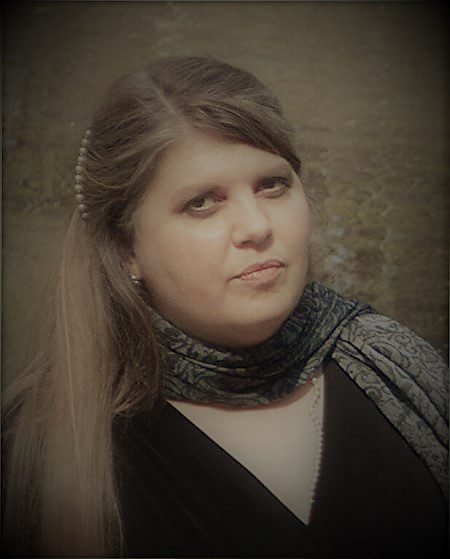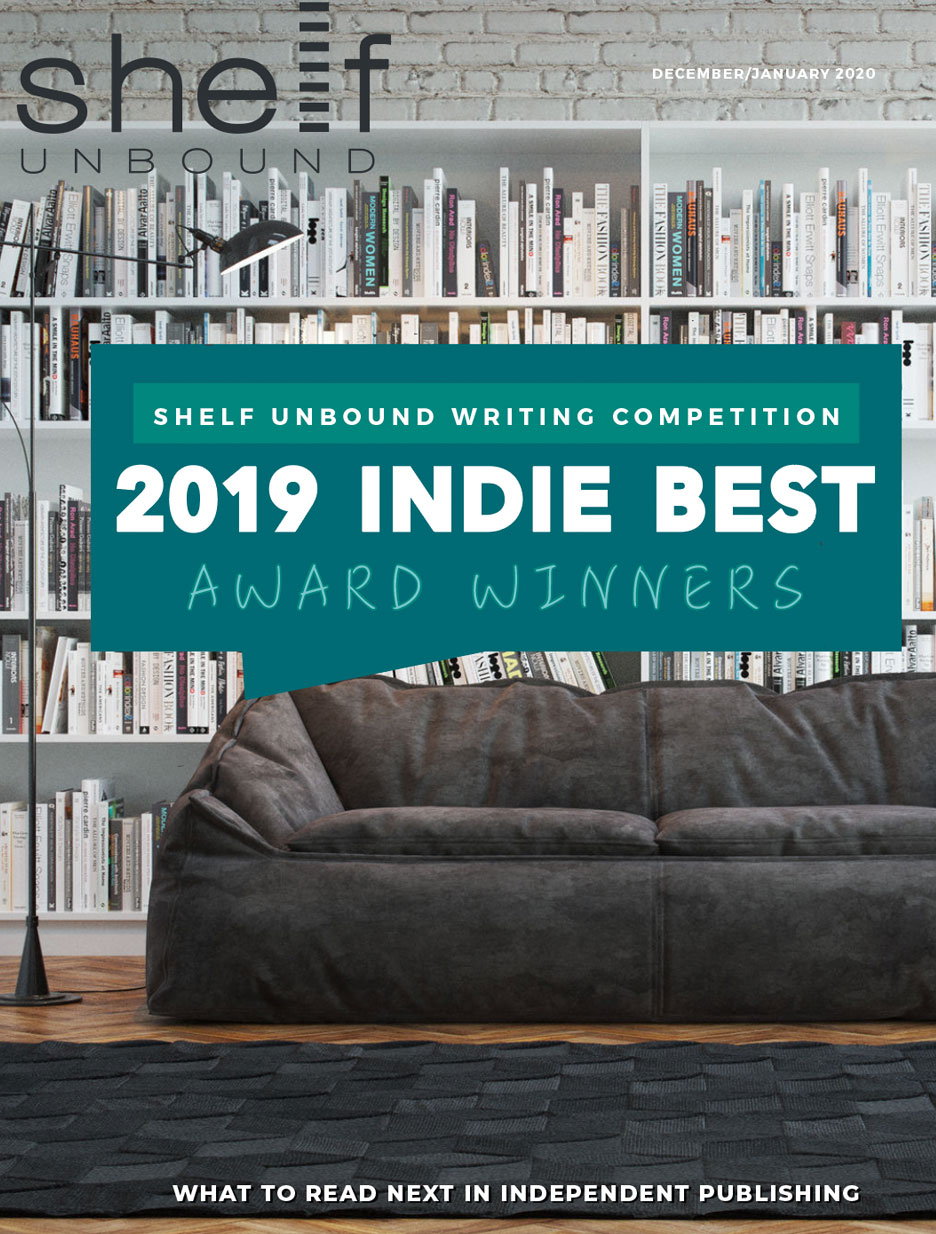Shelf Media hosts the annual Shelf Unbound Indie Best Book Competition for best self-published or independently published book. You can find the winner, finalists, long-listed, and more than 100 notable books from the competition in the December/January 2023 issue of Shelf Unbound.

If your stepmother were a sociopath, how would you know? And who would you turn to?
Life is not as ordinary as it seems for Gaynelle and Vivian, who only understand that the woman they now call ‘Mama’ is complicated and difficult to please. Is the romantic love that Gaynelle finds at a too-tender age going to last? And will Vivian uncover the truth about her parentage while recovering from a strange illness?
Rural South Carolina meets the Roaring 20’s in this tale of two sisters who face separation and trauma with the resilience of the young and find their way, despite everything.
About The Author: Sophia Alexander

Sophia Alexander is the mother of two college-age children and a number of manuscripts. Her character-driven historical fiction grips readers’ emotions and surprises them with unexpected twists. A full-time author with a passion for genealogy, she resides near the beautiful Southern city of Savannah, Georgia, but studied in the magnificent Pacific Northwest at Bastyr University, where she earned a doctorate in naturopathic medicine-and thus her characters are often found swallowing decoctions or slathering on herbal salves. Her narratives have appeared in local anthologies, and she was awarded first place in the Savannah Authors 2017 Short Story Contest.
Interview with Sophia Alexander
Tell us a little about your book.
SA: Tapestry: A Lowcountry Rapunzel is the sequel to Silk: Caroline’s Story, which just so happened to be a finalist in the 2021 competition. I am over the moon to have both books so recognized by Shelf Unbound as top Indie novels. Tapestry is about two sisters growing up in the sometimes-not-so-Roaring Twenties in the rural Lowcountry of South Carolina. They have to cope with a difficult, occasionally dangerous stepmother, and the younger sister’s story happens at times to mirror the fairytale of Rapunzel. Gaynelle is gentle and romantic, while her quick-witted elder sister, Vivian, embraces modernity and the feminist revolution. There’s a love story and family mysteries, even a bit of murder and mayhem.
These Southern historical novels are the first two installments of a trilogy, a family saga loosely inspired by my own genealogy, though I’ve changed the names. Each book features a subsequent generation, so they can be read as stand-alone novels or together.
What was your inspiration for the idea?
SA: Rumors of my granny’s adoption have circulated since I was a girl, though she consistently denied them. Yet for her mother to have had a child after ten years of infertility seems awfully curious to me—downright suspicious given the seemingly unrelated adoption rumor and considering that she had two teenage stepdaughters living at home at the time. My granny’s close relationship with the youngest of her elder ‘sisters’ was another influencing factor. Gaynelle went to quite a bit of effort to regularly take my granny to the movies long after she was living in another town and married with children of her own. I still don’t know definitively what the truth of the matter is, but it was all enough to send my imagination whirling—and to concoct this story.
Or nearly enough… Actually, while I at first credited this adoption mystery as my sole inspiration, clearly the story of ‘Rapunzel’ also played a role—even though Tapestry is not at all written as a story for children. I was amazed to realize the similarities only after most of the rough draft was written. Since then, I truly understand how authors often unconsciously incorporate strong elements from others’ stories. It’s everywhere. I’m not sure I’d have believed it possible that those writers genuinely didn’t realize where their inspirations were coming from if I hadn’t done it myself with Tapestry.
In my case, thank goodness, it was a classic fairy tale, so fair game! When I was about ten years old, I read the original Brothers Grimm version of ‘Rapunzel’—I still have the very same unabridged volume of their fairy tales—and developed an instant affinity with Rapunzel, probably because I adored long hair and had always worn my hair that way. Later, I was again steeped in the tale when my daughter and I watched a DVD of Barbie as Rapunzel (we only saw Tangled after I’d written Tapestry). So many ‘Rapunzel’ elements had unconsciously woven themselves into my rough draft that once I realized it, I promptly subtitled my story A Lowcountry Rapunzel. During further revisions, I added Anne’s tapestry of Rapunzel in the tower in order to further embrace the trope. A literal tapestry had actually not existed at all in the first draft of Tapestry, as the title had at first been meant metaphorically. I embedded these direct references to the fable, however, in order to spell out correlations within the novel. The fable had been popular then as it is now, of course, and I’d discovered a variation on the tale that made it irresistible not to tell readers; certain grittier elements matched my story even better than the Brothers Grimm version. Aside from those direct references to the fairytale itself, I tacked on no other Rapunzelisms—all other likenesses to the fairytale were already present in the original rough draft.
One reviewer was particularly amusing when she exclaimed, “All that’s missing is her breaking out into song declaring ‘Mother Knows Best!’” That certainly isn’t so, but I’m still astonished that I was so entirely clueless about the presence of the Rapunzel trope while writing it. On that note, I sometimes read reviewers’ thoughtful analyses of my books with great interest, occasionally deciding that they are right about themes I’ve included, after all, even if I didn’t identify them at the time! Maybe I’m giving myself too much credit, but I imagine that happens a lot for dreamy poets and artists of all sorts.
What was the experience of writing this book like for you?
SA: I wrote most of the rough draft in a NaNoWriMo-style focused 30- day session. I’m not the fastest writer, so it was almost my entire focus for the month. Some of it did flow more easily than my first novel had, as I had more writing experience. I googled historical details the whole time (none to do with fairytales), but most of the research came afterwards in the course of countless edits. Overall, I was quite charmed while writing Tapestry, convinced it was even better than Silk. I felt that way for a long time, but the pendulum has now swung the other way. Silk is the heir, Tapestry the spare, and Homespun is the redheaded stepchild!
What was one of the most surprising things you learned while writing this?
SA: Writing is such a submersive experience, and it was somewhat startling to ‘experience’ how much things had changed—even in rural areas—in the course of just over a decade or so between Silk and Tapestry. Cars had become commonplace. Clothes were far more modern. Women received the vote!
On a more personal note, I discovered that my great-grandfather had fudged his age on his WWI draft card. I present Henry as rather flippant in the novel, but the fact of the matter was that both his grandfathers had died while quite young as they soldiered in the Civil War. I believe his paternal grandfather, at least, died of typhoid before even participating in a single battle; death from disease was four times more common for soldiers than death from wounds. Those unfortunate young men left behind devastated families with young children—including my great-great grandparents—and they were in dire straits. So it makes perfect sense that after such senseless losses Henry’s parents would have guided him to claim a younger age. I’d likely have done the same for my own son.
What is the one thing you hope readers take away reading this book?
SA: I’d honestly love to contribute in a positive way to the folklore of the rural South and boost its presence in popular culture. I’d also be gratified if readers are inspired to learn more about their own family histories. I find that genealogy connects us to others and to history itself.
There’s a sort of dual purpose, too, of hoping readers will share Gaynelle’s pure, traditional longing for her child and family while simultaneously strengthening such feminist initiatives as supporting the reproductive rights of girls and women and exercising our hard-won right to vote.
What are you working on next?
SA: I am sweating buckets over a last-minute revision of Homespun, which frankly has not received the endless polishing of the first two installments of The Silk Trilogy. Absolutely wallowing in knots over here.
Ginny represents the next generation of the family in this third volume, but it at first rewinds, revealing a bit more about Rosa’s family. Rosa is Vivian’s good friend in Tapestry, and she becomes Momma to Jack, Ginny’s inevitable love interest. I believe readers of the entire trilogy will especially appreciate Vivian’s later role as an investigative journalist, and they’ll be dismayed to meet Zingle, an entirely new antagonist who contrasts explosively with Jessie. Homespun is due to be released on Saint Patrick’s Day, March 17, 2023, and I will be most delighted and relieved to have completed the trilogy.
I do have a brood of other works in progress, waiting all-too-silently in the nest. I’m anxious to get back to them! I recently attended an author talk where an audience member asked what was in the works, and the novelist swiftly tallied up eight different projects at various stages. I am in a similar boat, swimming in a melange of historical fiction manuscripts at different levels of completion, so rest assured that there is much more to come from Sophia Alexander!

Continue Reading…
Article originally Published in the December/January 2023 Issue “2022 Indie Best Award Winners”
